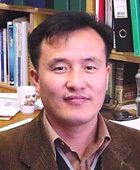
소형 정수기 냉수통의 전자냉각을 위한 열전소자 유닛화 설계
Abstract
Compressor-refrigerant systems are typically used in water purifiers. However, there is a growing interest in using electric cooling techniques with thermoelectric elements. Although thermoelectric elements have a lower cooling efficiency than compressors, they have several advantages, such as compactness, eco-friendliness, and semi-permanent usability. To meet miniaturization and slim design requirements, home water purifier development has shifted toward incorporating thermoelectric elements for the direct cooling of cold- water tanks. Unlike the conventional method of integrating thermoelectric elements into a cooling block, this new method aims to improve product aesthetics and functionality. However, the durability of thermoelectric elements poses a challenge, resulting in frequent defects while in operation. Therefore, this study focuses on unitizing thermoelectric elements to improve product durability. Unitization enables applications in confined spaces without altering the current product configuration, improving thermoelectric element durability and showcasing superior cooling performance (effectively maintaining the desired temperature of 10℃).
Keywords:
Thermoelectric module(TEM), Thermoelectric element unitization, Cooling device, AL heat sink, Heat dissipation, Water purifierReferences
-
Son, D. S., Dong, S. H., Lee,W. Y., 2021, Development of Automatic Temperature Control Module for Semiconductor Test Process Using Thermoelectric Element, J. Korean Soc. Manuf. Technol. Eng., 30:1 31-36.
[https://doi.org/10.7735/ksmte.2021.30.1.31]

-
Lee, K. J., Jeong, K. S., Park, S. M., 2010, Improvement of the Uniformity of Temperature Distribution inside Semiconductor Test Equipment Chamber, Journal of The Korea Academia-Industrial cooperation Society, 11:10 3626-3632.
[https://doi.org/10.5762/KAIS.2010.11.10.3626]

- Chon, H. S., Moon, S. E., 2015, Application Trends in Thermoelectric Materials, Electronics and telecommunications trends, 30:1 144-153.
- Yoo, S. Y., Hong, C. P., Shim, W. S., 2004, A Study on the Performance of Thermoelectric Module and Thermoelectric Cooling System, Korean Journal of Air-Conditioning and Refrigeration Engineering, 16:1 62-69.
- Im, C. H., 2014, Experimental Study on the Cooling Performance of a Refrigeration System using Thermoelectric Module, Master Thesis, Korea University, Republic of Korea.
-
Cho, Y. T., 2020, Forced Heat Dissipation in 120 W Street LED Using Thermoelectric Modules, J. Korean Soc. Manuf. Technol. Eng., 29:4 281-287.
[https://doi.org/10.7735/ksmte.2020.29.4.281]

- Cho, Y. T., Ma, S. D., 2018, Cooling Performance Enhancement of Small Water Purifier using the Thermoelectric Module, Proc. Korean Soc. Manuf. Technol. Eng. Autumn Conf., 123.

An Associate Professor at the Dept. of Basic Science, College of Engineering, Jeonju University. He is interested in Product and Mechanical Design, Nondestructive Testing and Evaluation using Infrared Thermography.
E-mail: choyt@jj.ac.kr